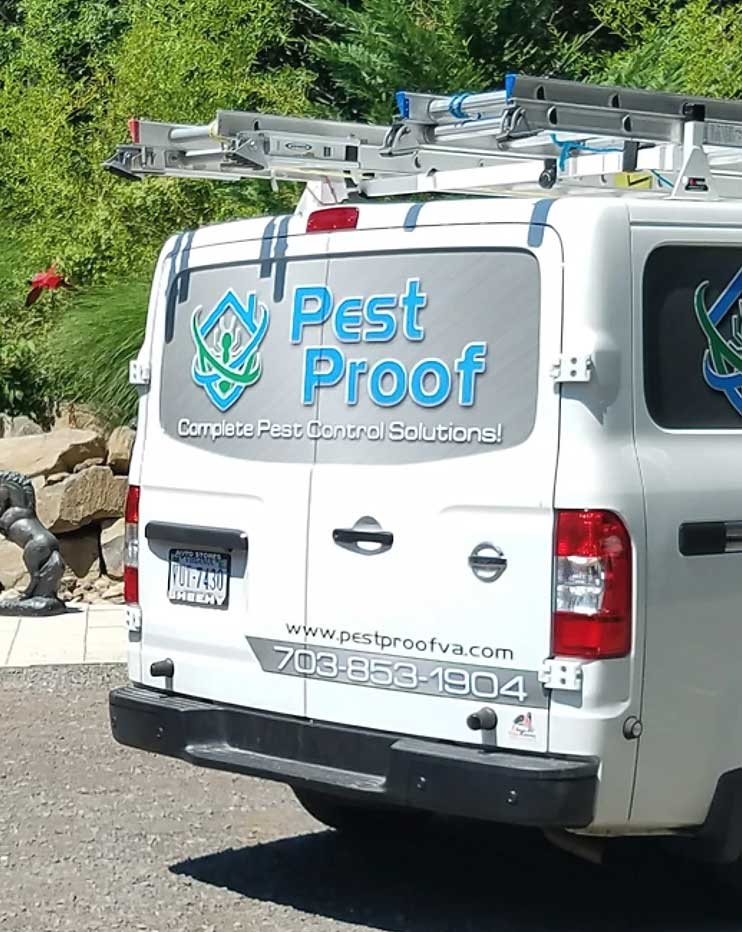Flea Removal & Control Treatments In Manassas, VA
Fleas bite and it may seem like a harmless itch, but some fleas can carry disease as vectors would. A flea bites and causes an itchy sensation.
A human will scratch to satisfy the itching feeling unaware of the bacteria and viruses which could transfer from the flea. Constant scratching and biting by your pet may cause hair loss and severe eczema in the area.
Remove fleas from your pets and give your dog or cat a thorough flea bath. Apply flea medicine and repellant on the fur or give oral medication to your pet to prevent fleas from jumping back on.
Contact Pest Proof Pest Management to assist you in maintaining a flea-free home.
Why Are Fleas Harmful?
Yes, fleas bite and they may cause seemingly harmless itches, but some fleas can carry disease such as vectors would. In most cases, a flea will bite and cause itching. A human will scratch to satisfy the itching feeling. A pet will scratch and chew to calm the itch.
If a pet bites or scratches long enough, it could result in hair loss in the area. In other cases, a flea can carry bacteria and viruses which could transfer to its host. Such infections would need treatment, quickly. Pest Proof Pest Management will help you with your flea issue.
How To Protect Your Pets From Fleas
To remove fleas from your pets, you can give your dog or cat a thorough flea bath. In addition to that, you would want to apply a flea medicine either by fur or orally to your pet to prevent fleas from jumping back on. It is also a good idea to wash all of your dog’s bedding or blankets.
General Information About Fleas
Fleas are known as external parasites that feed on blood and flesh debris left on the host’s skin. Fleas can attach themselves to a host and cling on. Fleas are also jumpers. They can jump, using their hind legs, up to 7 inches across and 13 inches high. Fleas often find one host and stick with it unless threatened; then they tend to jump off. They will want to attach to another host as soon as possible. There are some cases where fleas can be very picky about their host and will only attach to one particular species. Some host examples that fleas love to feast upon are humans, dogs, cats, squirrels, rats, mice and birds. As you can see by that list, it is possible to have fleas surrounding your home.
Fleas can lay up to 2 dozen batches of eggs. That can be hundreds to thousands of eggs in its lifetime, depending on species. A flea goes through a few stages in life, egg, larva, pupil and adult. Once the flea has reached its adult stage, its primary goal and purpose are to feed and reproduce. The life expectancy of a flea ranges from a few days to a year and a half, depending on food supply, humidity and temperature.
Fleas feed on blood and leftover skin tissue. An adult flea has a sucking tube to pierce and feed as larva have mandibles to help consume its food. Flea bites look like small red dots and appear in clusters. Fleas tend to bite you on your ankles, feet and lower legs. If bitten, it may not be painful at first, but it could become painful later. The flea bite causes severe itching and swollen tissue around the area. You will feel itchy, and your immediate response is to scratch. Dogs and cats will scratch, birds will peck. Want to prevent your family and pets from being bitten by fleas, call upon Pest Proof Pest Management.
How To Identify Fleas
Fleas are known as external parasites that feed on blood and flesh debris left on the host’s skin. Fleas can attach themselves to a host and cling on. Fleas are also jumpers. They can jump, using their hind legs, up to 7 inches across and 13 inches high. Fleas often find one host and stick with it unless threatened; then they tend to jump off. They will want to attach to another host as soon as possible. There are some cases where fleas can be very picky about their host and will only attach to one particular species. Some host examples that fleas love to feast upon are humans, dogs, cats, squirrels, rats, mice and birds. As you can see by that list, it is possible to have fleas surrounding your home.
Fleas can lay up to 2 dozen batches of eggs. That can be hundreds to thousands of eggs in its lifetime, depending on species. A flea goes through a few stages in life, egg, larva, pupil and adult. Once the flea has reached its adult stage, its primary goal and purpose are to feed and reproduce. The life expectancy of a flea ranges from a few days to a year and a half, depending on food supply, humidity and temperature.
Fleas are made up of three major parts – the head, abdomen and thorax. Attached to its body are six legs. The flea’s legs are essential to the flea’s survival because they use them to jump and grasp on to its host. Adult fleas are flat and lay on their sides; this helps it burrow and hide in its fur or feathers. Although fleas are not known for living in human’s hair, a flea can live in other areas around you, even if you don’t have pets. Fleas don’t have eyes like other insects; fleas have eyespots. Some fleas have no eyes at all. Most fleas appear brown. They do jump very high and far, but fleas cannot fly.
Fleas that live on your pets don’t typically jump to humans, but they can, and they will bite you. If you notice you are continually itching around your ankles, your dog or cat constantly itching and chewing its fur, or your bird pecking at its wings, there is a good chance you may have fleas in your home. Combat this and help keep the fleas from causing annoying discomfort and infection from the flea bites. Call on us, the experts in flea removal.
Pest Proof
Management
Pest Control and Wildlife Removal for
Residential & Commercial
in Manassas, VA, Front Royal, VA, and
Fredericksburg, VA





